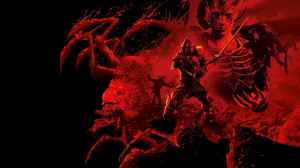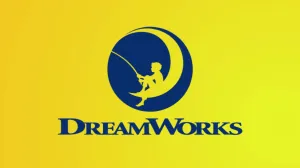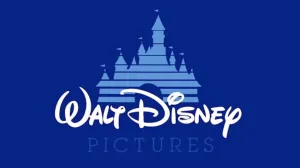
Miracleman may be the greatest superhero comic you’ve never heard of. An early Silver Age British analogue of Captain Marvel (the DC superhero now known as Shazam), Miracleman rose to fame in the 1980s thanks to historic runs by the teams of Alan Moore, Garry Leach and Alan Davis and Neil Gaiman and Mark Buckingham. Unfortunately, financial issues plagued the owners of Miracleman and a nasty fight broke out over who owned the character, leading to a legal quagmire that took years to unravel. With a new(ish) Miracleman story on its way, now seems like a good time to take a look back at the long and complicated history of the character.
Videos by ComicBook.com
A Hero is Born
Like many early superheroes, Miracleman can trace his roots all the way back to Superman. At the time, other publishers like Fawcett Comics created copycat superheroes with similar powers, costumes and adventures to DC’s Man of Steel. Fawcett’s Superman facsimile was Captain Marvel, a young boy who could magically transform into a superhero. After seeing how popular Captain Marvel had become, DC sued Fawcett over the similarities between the two heroes. After Fawcett settled the lawsuit in the 1950s, the company agreed to cease all Captain Marvel comic books. This included the British reprints of the Captain Marvel comics, published by a separate company run by Len Miller. Not wanting to lose one of its top sellers, Miller hired Mick Anglo to come up with a replacement. Anglo’s solution was Marvelman, a blond, clean shaven hero in a blue bodysuit.
Marvelman, as created by Anglo, was little more than a Captain Marvel knockoff. Both Marvelman and Captain Marvel had child alter egos who became superpowered adults by saying a “magic word”. Kid reporter Micky Moran replaced kid reporter Billy Batson. Instead of getting his powers from a wizard, Moran gained his powers from a scientist. Batson transformed into Captain Marvel by saying the magic word “Shazam!”, while Moran’s magic word was “Kitoma!” Both even had an extended “Marvel Family”. Captain Marvel had Miss Marvel and Captain Marvel Jr., while Marvelman had Kid Marvelman and Young Marvelman. Captain Marvel and Marvelman even sported similar fonts on their comic covers, a trick employed by Miller to attract former Captain Marvel readers to the new comic.
Enter Alan Moore
Soon, Marvelman comics filled the spots on newsstands once filled by Captain Marvel comics, and for a time the series was popular among schoolchildren. Unfortunately, Marvelman fell out of favor with the start of the Silver Age of Comics, as a wave of new Marvel and DC Comics made their way over to Britain. Anglo quit Marvelman in 1960 and the comic folded just a few years later. For twenty years, it looked as if Marvelman would fade into a footnote in obscure comics history, until an up and coming British writer named Alan Moore took an interest in revitalizing the character.
Back then, Alan Moore wasn’t the literary giant whose comics changed the medium. This was pre-Watchmen, pre-Swamp Thing, pre-League of Extraordinary Gentlemen Alan Moore. After learning that a new British publisher called Warrior had the rights to the character, Moore pitched a darker dystopian version of Marvelman, set years after the original story with kid hero Micky Moran now all grown up. While Moore had written superhero comics before (most notably Captain Britain for Marvel UK), Marvelman represented one of Moore’s first attempts at deconstructing the genre and pushing the boundaries of what the superhero comic could do.
Under Moore’s guidance, Marvelman transformed from a generic Golden Age superhero to a troubled three dimensional character plagued with identity crises and the consequences of his own powers. The book explored the relationship between Marvelman, his alter ego Micky Moran, and Moran’s wife, Liz, with Liz falling in love with both Marvelman and Moran in different ways. Moore also explored the destructive capabilities of superheroes, with Kid Marvelman turning into a vicious psychopath after refusing to transform back to his human form. Moore’s time on Marvelman set the tone for much of his later superhero work, including his genre changing Watchmen miniseries.
The Neil Gaiman Years
As Moore’s Marvelman grew in popularity and the writer’s own star began to rise, Warrior sold the rights to Moore’s Marvelman stories to the American publisher Eclipse Comics, who reprinted Moore’s original stories under the new name “Miracleman” in order to avoid a lawsuit with Marvel Comics. Moore continued his story under Eclipse, which culminated with Miracleman killing his former sidekick’s alter ego after Kid Miracleman had destroyed much of London in a devastating rampage.
After he finished his run, Moore turned the series over to his friend and comics writing protégé Neil Gaiman, then a relative newcomer to comics. Moore promised Miracleman to Gaiman while the writer was still trying to break into comics and was among the creator’s first comic works. However, by the time his first Miracleman comic went to print, Gaiman was already working on his much more famous series Sandman. Gaiman and artist Mark Buckingham continued some of the themes of Moore’s run, with Miracleman and the remnants of his family ruling London as gods and transforming it into a seemingly perfect utopia. Unfortunately, Gaiman’s run on Miracleman ended abruptly after Eclipse Comics went bankrupt in the early 1990s, leaving Miracleman only halfway through Gaiman’s planned story arc.
Legal Troubles
From there, the story of Miracleman shifted from the pages of a comic book to the drama of a courtroom. Todd McFarlene, the creator of Spawn and co-founder of Image, purchased the creative rights of Eclipse Comics, which he thought included the rights to Miracleman. Gaiman challenged those rights, feeling that he had partial ownership of the stories he had written for Eclipse. After founding an entity dedicated to clearing up the rights to Miracleman, Gaiman sued McFarlene, leading to a public battle over the rights. Gaiman wrote the Marvel miniseries 1602 to fund his legal fight over Miracleman and even dedicated the Marvel series to McFarlene. The legal battle between the two ended after a judge ruled that Warrior, the British publisher who brought Miracleman back in the 1980s, had never bought the rights from Mick Anglo, the character’s original creator.
The Marvel Age
With the rights seemingly cleared up, all Miracleman needed was a new home. In 2009, Marvel announced they had purchased the rights to the famous character from Mick Anglo. While the process took several years, Marvel slowly reprinted the original Miracleman comics, starting with Anglo’s original stories. Marvel reprinted Alan Moore’s seminal run on the series last year, crediting him as “The Original Writer” as Moore didn’t want his name used to promote the book. And now, starting this week, Marvel’s is beginning reprints of Gaiman and Buckingham’s run on Miracleman, which will lead into Gaiman and Buckingham finishing the story they began over twenty years ago.
For years, it seemed that Miracleman would be a “lost” comic series, its brilliance and importance to comics history lost due to murky legal rights. Until last year, copies of Alan Moore and Neil Gaiman’s Miracleman runs were hard to come by, hoarded as collector’s items and found only in the secondary market. Not only are the Moore and Gaiman runs of Miracleman historically important to comics, they’re also among the best superhero comics of the modern era. And finally, every comic reader in the world can discover just how magical they are.













